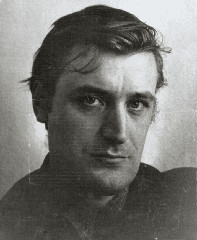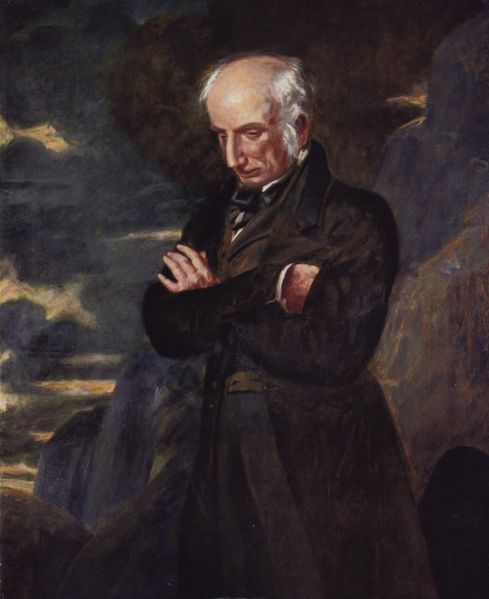PSYCHOANALITYCAL CRITICISM


Ted Hughes
Lovesong
He loved her and she loved him.
His kisses sucked out her whole past and future or tried to
He had no other appetite
She bit him she gnawed him she sucked
She wanted him complete inside her
Safe and sure forever and ever
Their little cries fluttered into the curtains
Her eyes wanted nothing to get away
Her looks nailed down his hands his wrists his elbows
He gripped her hard so that life
Should not drag her from that moment
He wanted all future to cease
He wanted to topple with his arms round her
Off that moment's brink and into nothing
Or everlasting or whatever there was
Her embrace was an immense press
To print him into her bones
His smiles were the garrets of a fairy palace
Where the real world would never come
Her smiles were spider bites
So he would lie still till she felt hungry
His words were occupying armies
Her laughs were an assassin's attempts
His looks were bullets daggers of revenge
His glances were ghosts in the corner with horrible secrets
His whispers were whips and jackboots
Her kisses were lawyers steadily writing
His caresses were the last hooks of a castaway
Her love-tricks were the grinding of locks
And their deep cries crawled over the floors
Like an animal dragging a great trap
His promises were the surgeon's gag
Her promises took the top off his skull
She would get a brooch made of it
His vows pulled out all her sinews
He showed her how to make a love-knot
Her vows put his eyes in formalin
At the back of her secret drawer
Their screams stuck in the wall
Their heads fell apart into sleep like the two halves
Of a lopped melon, but love is hard to stop
In their entwined sleep they exchanged arms and legs
In their dreams their brains took each other hostage
In the morning they wore each other's face
Poem Source: http://www.poemhunter.com/p/m/poem.asp?poet=6616&poem=30213

William Wordsworth
(1770-1850)
She Was a Phantom of Delight
1 She was a Phantom of delight
2When first she gleamed upon my sight;
3A lovely Apparition, sent
4To be a moment's ornament;
5Her eyes as stars of Twilight fair;
6Like Twilight's, too, her dusky hair;
7But all things else about her drawn
8From May-time and the cheerful Dawn;
9A dancing Shape, an Image gay,
10To
haunt, to startle, and way-lay.
11I
saw her upon nearer view,
12A
Spirit, yet a Woman too!
13Her
household motions light and free,
14And
steps of virgin-liberty;
15A
countenance in which did meet
16Sweet
records, promises as sweet;
17A
Creature not too bright or good
18For
human nature's daily food;
19For
transient sorrows, simple wiles,
20Praise,
blame, love, kisses, tears, and smiles.
21And
now I see with eye serene
22The
very pulse of the machine;
23A
Being breathing thoughtful breath,
24A
Traveller between life and death;
25The
reason firm, the temperate will,
26Endurance,
foresight, strength, and skill;
27A
perfect Woman, nobly planned,
28To
warn, to comfort, and command;
29And
yet a Spirit still, and bright
30With
something of angelic light.
Publication date: 1807
Poem source: http://rpo.library.utoronto.ca/poem/2366.html
Along this paper, I am going to try to analyse some poems dealing with the
psychoanalytic literary criticism. I will focus this paper on some poems
I have com-mented in previous papers, instead of analysing new ones. Maybe,
a proper psychoanalytic study would focus on just one author witnessing and
comparing all his/her works and trying to explain his/her motivations, fears,
themes, topics… from the psychological point of view of the author. However,
I will only focus my paper on just these poems, not only trying to contemplate
the psychological motivations of the authors, but also the relationships
and links that these poems may have in common. Furthermore I will analyse
these poems dealing with two main matters: 1-What are the author’s psychological
conflicts? And 2- Does the author reflect the reader’s psychological conflicts?
The psychoanalytic theory started
obviously with Sigmund Freud’s studies about the human psyche. It is based
on the idea that the human mind is divided into three parts: the id or unconscious
(the desires and impulses which only follow the dictate of the pleasure principle);
the superego (the moral and the ethics acquired from the social order); and
the ego (the conscious that must regulate and mediate between the two other
parts in order to achieve the most satisfactory profits. It is often said
that insane people are the ones, whose ego can not control the other two parts.
However, from the artistic point of view, the ego represents a symbol of
repression and sublimation to the unconscious part, and that the ego is always
in a state of conflict. That is why literature is considered as the wish
fulfilment or fantasy gratification of desires denied by the reality principle
or prohibited by moral codes. It is a way to free the unconscious part and
express the secret unconscious desires and anxieties of the author. Moreover,
the psychoanalytical perspective claims that artist’s inspiration comes from
dreams or that their own art is dream itself. The goal of psychoanalytic criticism
is to reveal the latent content of the work that underlies and determines
its manifest content. To analyse that, critics use data from the real events
of an author's life and the fictional events dramatized in his literature.
In fact, the literary work is a manifestation of the author's own neuroses.
All the content, characters, events… of a literary work are considered to
be part of the own author’s psyche. Literature is seen as an expression of
unresolved emotions, psychological conflicts, guilt, traumas, sexual conflicts…
that the author has patent in his unconscious part. Psychoanalytic criticism
does not study the author´s intentions, but what the author never intended
and it is repressed in his mind. Freud and Lacan claimed: “Art is the unconscious
structured as language”. (Glossary
of Literary Theory, Wikipedia,
Introduction
to literature: Psychoanalytic Criticism)
Concerning dreams, one of the
major proposals of psychoanalysis is the interpretation of dreams. Indeed,
Freud wrote an essay called “Interpretation of Dreams (1900)”. Dreams are
representation of fears and repressions that come from the unconscious part,
so as art. There are many interpretations of any kind of dream, but I want
to focus on the so-called “dreams about death”, which are considered the representation
of the most inner fears and, somehow, a way of understanding poetry and art.
According to psychoanalysis, dreaming about death could be interpreted not
as a manifestation of the death itself, but as a symbol of the end of any
event: a relationship, a work… There are a few cases when it really means
that death is going to happen, but usually it means the rebirth of something
better. Dreams about death of beloved persons or “ghosts” of people who are
already dead could be interpreted as a grief that it has not been overcome
yet. (Materials
and sources of dreams, Meaning of dreams).
To clarify that fact I have chosen to psychoanalyse the poem “She was a Phantom
of Delight” by William Wordsworth.
William Wordsworth was a very traumatic
figure, especially concerning his relationships with females. He lost his
mother when he was very young and he always had a strange relationship with
his sister Dorothy (some critics say that an incestuous one). So the figure
of his dead mother and his sister is patent in his poetry (William Wordsworth Biography).
Along this poem he relates a daydreaming encounter with a kind of ghost with
the shape of a woman, which produces in him a mixture of fear and curiosity.
He indeed compares that ghost’s motions with a virgin and a housemate (Stanza
two). Despite he can witness the ghost most clearly each time, he never recognizes
totally the identity of that ghost, he only assumes its shape, which is a
woman´s shape. So, we can assume that the author, somehow, is obsessed
with death or that he is “scared” or he has constantly in mind, the figure
of a lady that affects him directly or indirectly and he can not escape from
her and that “ghost” is maybe always latent in his unconscious part.
Another important human aspect that
psychoanalytical criticism studies is sexuality. The majority of sexual traumas
of artists and their works analysed by psychoanalysts are related with the
famous: Edip-Electra´s complex, repressions, homosexuality… Psychoanalytical
critics must study the aspects of the author’s real life and his fictional
works in order to find those traumas to really understand the author´s
real mind. However, I am more interested in other kind of “perversions” and
“distorsions”. Psychoanalytic critics must not only study the unconscious
latent parts in the artist’s works, but also the conscious ones that the author
shows in his works in order to denounce them or empathise with the reader´s
mind. I want to focus on one of these perversions: Sadomasochism. Sadism
and masochism represent contrasting forms of pleasure derived from sexual
excitation linked to cruelty and the infliction of pain. Freud and Richard
Krafft-Ebing (Three Essays on the Theory of Sexuality -1905) claimed that
both are habitually found together in the same individual and occur to-gether
regularly as pairs of opposites. (Sadomasochism/
International Dictionary of Psychoanalysis) So, as we can appreciate,
this term is usually applied describing some ways of pleasure in the sexual
relationships. So, that is the reason whyt I have chosen to psychoanalyse
the poem “Love Song” by Ted Hughes. In my opinion, along this poem the author
describes a sexual relationship with the two lovers who are consuming their
love and literally almost devouring each other. There are many references
to affirm this opinion; words like: suck, bit, gnawed… and clear references
to other sadomaso-chistic elements: bullets, whips, jackboots… I think
the author wants to emphasize the “love-knot” concept and the consummation
of love and destruction of time (There are many references to the destruction
of past and future to enjoy the present. (L. 2-4) Moreover, from my point
of view, the poet is totally conscious of his intentions with this poem. He
wants to satisfy and express the reader´s desires and maybe, on the
contrary of Wordsworth´s poem, I do not find any trace of unconscious
parts that can be latent in his poem. Furthermore, this is a poem of desires,
whereas Wordsworth´s one is a poem of fears and illusions.
In conclusion, in my opinion, the
psychoanalytical criticism can be considered to be very radical because it
underlines the possibility that all artists must be neurotic, frustrated…
and they use their art to show those unconscious motivations; and it stresses
the statement that no artist is really conscious of what he is writing ,
which I think is not really true. From my point of view, many artists are
conscious, know and study very well their works before publishing them. Indeed
most of them play the reader´s unconscious part. However, this theory
is also very interesting in order to analyse traumas, fears… that the author
has himself (and he himself knows he has), and uses his art as a cathartic
experiment
BIBLIOGRAPHY
Glossary of Literary Theory, Psychoanalytic
Theory, University of Toronto English Literature, Ed. Greig E. Henderson &
Christopher Brown, 24th May 2006
<(http://www.library.utoronto.ca/utel/glossary/Psychoanalytic_theory.html)>
Literary Criticisms, Psychoanalytic Literary Criticism, Wikipedia.org
Ed. Jimmy Wales, 24th May 2006
<(http://en.wikipedia.org/wiki/Psychoanalytic_literary_criticism)>
Critical Theories, Psychoanalytic Criticism, Introduction to literature
Ed. Dr Michael Delahoyde, 24th May
<(http://www.wsu.edu:8001/~delahoyd/psycho.crit.html)>
Materials and sources of dreams, Dreams about death, Sigmund Freud´s
Interpretation Of Dreams, Ed. Dr Dewey, 24th May 2006
<(http://www.psywww.com/books/interp/chap05d.htm)>
Meaning Of Dreams, Dreams about death, MeaningOfDreams.net,
Webmaster Unkown, Email: webmaster@meaning-of-dreams.net , 24th May 2006
<(http://www.meaning-of-dreams.net/dreams/death.html)>
Biographies, William Wordsworth Biography and works, The Literature Network,
Publisher. Jalic LLC, 24th May 2006
<(http://www.online-literature.com/wordsworth/)>
International Dictionary Of Psychoanalysis, Sadomasochism, Social Sciences,
Enotes.com, 24th May 2006
<(http://soc.enotes.com/psychoanalysis-encyclopedia/sadomasochism)>
THE TYGER
TO A LADY
SHE WAS A PHANTOM OF DELIGHT
VS
SHE WALKS IN BEAUTY
THE LABORATORY
THE BLESSED
DAMOZEL
INDEX



